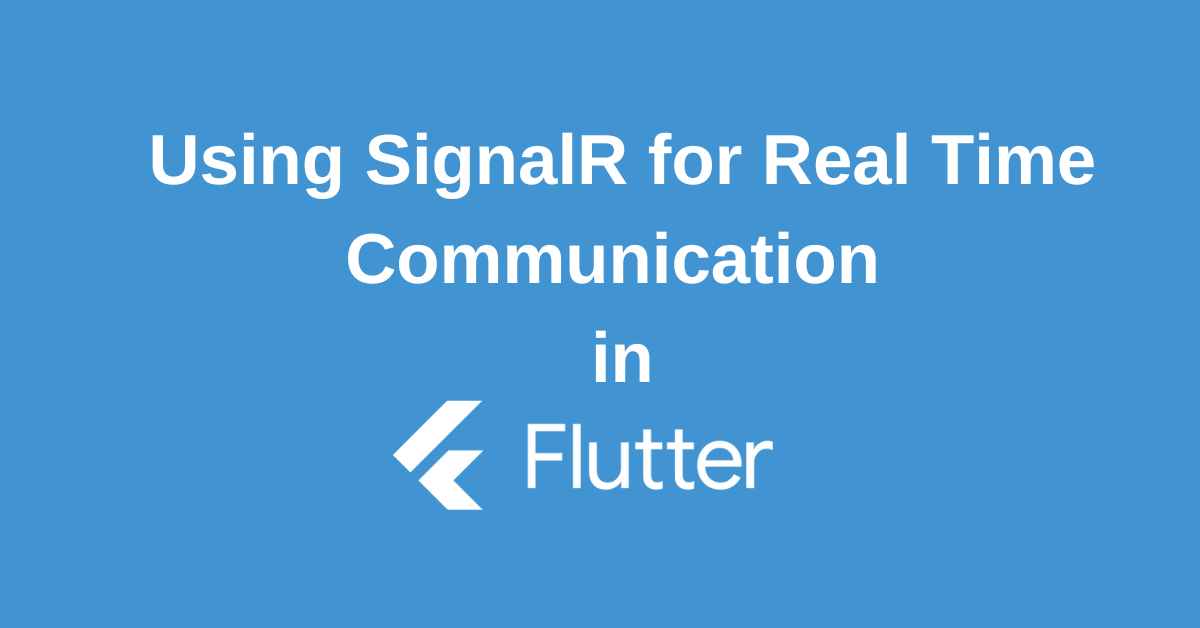In today’s fast-paced world, users crave applications that feel alive and responsive. Real-time features like live chats, stock tickers, or constantly updating dashboards are no longer a novelty, but an expectation. But how do you achieve this level of real-time magic in your Flutter app?
Enter the dynamic duo of Flutter SignalR! This powerful combination unlocks a world of possibilities for building engaging and data-driven experiences in your Flutter applications.
This blog post will explore the exciting synergy between Flutter and SignalR.
What is Flutter SignalR?
While Flutter excels at building beautiful mobile interfaces, it lacks built-in features for real-time communication. Here’s where Flutter SignalR comes in. It combines the power of Flutter with SignalR, a server-side library for real-time interaction. Through third-party packages, your Flutter app can connect to a SignalR server, send and receive data in real-time, and invoke server-side functions, enabling features like live chat and dynamic data updates for a more engaging user experience.
Benefits of Flutter SignalR
Here are some benefits of SignalR in Flutter:
- Engaging User Experiences: Enable features like live chat, data streaming, and collaborative editing.
- Real-Time Updates: Keep your app data fresh and users informed with instant updates.
- Simplified Development: Leverage third-party packages for easy integration with SignalR servers.
By using SignalR in Flutter , you can create dynamic and responsive Flutter apps that keep your users engaged and in the loop.
Understanding Flutter SignalR Chat
Imagine a real-time chat app built with Flutter, where messages fly between users instantly. This magic is powered by Flutter SignalR! It acts as a bridge between your Flutter app and the server. When a user sends a message, the Flutter client uses SignalR to call a server-side function (called a hub function). This function on the server then broadcasts the message to all connected clients, ensuring everyone sees it in real-time. Essentially, Flutter SignalR keeps the conversation flowing seamlessly in your Flutter chat app.
Unveiling the Magic: How Flutter SignalR Clients Work
To truly leverage Flutter SignalR, understanding how the client functions is key. Here’s a breakdown:
- Connecting and Subscribing: Each Flutter client connects to a SignalR server. They can then “subscribe” to specific server functions (called hub functions) that they want to receive updates from.
- Two-Way Communication: The beauty lies in the two-way communication.
- Clients can directly call these hub functions on the server, sending data (like a chat message).
- The server can also send data (like new messages from other users) to subscribed clients through these functions.
- Flexibility for Simple or Complex Tasks: Hub functions can handle various tasks. They can be as simple as sending a string message or complex enough to involve data processing and returning complex objects to the client.
This two-way communication facilitated by SignalR allows your Flutter app to stay in sync with the server and other clients in real-time.
Unlocking Real-Time Magic with Server-Side Hub Functions
Flutter SignalR takes your app beyond basic functionality by enabling powerful server-side hub functions. These functions reside on the server and can be triggered by your Flutter client. Imagine a chat app where sending a message is a hub function. When a user types and sends a message, the Flutter client calls this server-side function. The server-side function then broadcasts the message to all connected clients, creating a real-time chat experience. This two-way communication between your Flutter app and the server is the foundation for building dynamic and engaging features
The Power Behind the Scenes: Flutter WebSockets
While Flutter SignalR orchestrates the real-time magic, a hidden hero plays a crucial role: Flutter WebSockets. This technology acts as a dedicated communication channel between your Flutter app and the server. Imagine a highway designed specifically for real-time data exchange. That’s essentially what Flutter WebSockets provide.
In our chat app example, when a user sends a message, Flutter WebSockets ensure it zips instantly from the client to the server. Likewise, messages from other users travel smoothly back to your app in real-time. This seamless data transfer is what keeps your chat app feeling fluid and responsive, providing a fantastic user experience.
Conclusion
The combination of Flutter and SignalR is a game-changer for developers seeking to create dynamic and engaging mobile applications. By leveraging Flutter’s ability to craft beautiful UIs and SignalR’s real-time communication capabilities, you can unlock a world of possibilities:
- Engaging User Experiences: Build features like live chat, data streaming, and collaborative editing, keeping users glued to your app.
- Real-Time Updates: Ensure your app data is always fresh and users are instantly informed of changes.
- Simplified Development: Third-party packages streamline integration of SignalR into your Flutter projects.
Ready to take your Flutter apps to the next level? Embrace the power of Flutter SignalR! The resources mentioned throughout this blog post provide a strong foundation for your journey. Dive in, explore the possibilities, and witness the magic of real-time communication unfold in your Flutter creations.
Remember, a well-designed real-time experience can significantly boost user engagement and satisfaction. So, start building the dynamic and responsive Flutter apps of tomorrow, today, with the help of Flutter and SignalR!

